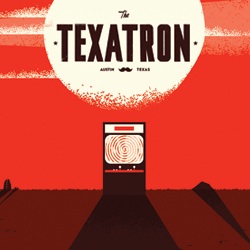RAGDOLL METAPHYSICS: CLOUD GAMING IS THE NEBULOUS SHAPE OF UBIQUITOUS GAMING
Science fiction has a habit of becoming reality a lot faster than we imagine. One of my favourite books, The Shape Of Further Things by Brian Aldiss, is a series of rambling, random essays written at the end of the Sixties. In it he suggested that one day we’d all be connected by an all-encompassing information network called “The Big Hookup” and we’ll be able to access it with remote devices that we all carry around with us independently. Crazy talk, Brian, really. That technology is centuries away.
Last year, at GDC 2008, I sat in a room with a bunch of the world’s most experienced developers, as they outlined science fiction ideas about how gaming might work in the future: how games might be rendered remotely on giant super-computing clusters and then streamed to our homes. A year later the tech was being demoed – apparently live and functional – at the same event.
Cloud gaming, the idea of “games on demand” proposed by startup services like OnLive and Gaikai, suggests that the days of us buying powerful home processing hardware – be it consoles or PCs – could be numbered. The theory that these services ride on is that they will be able to render and stream games directly to “thin” client side devices: nothing more than a gamepad, a screen, and the processor required to decode the video stream. All the big graphics crunching will be done by the servers, and at our end a low-spec laptop will do the job.
So the age old cycle of upgrading from one generation of hardware to the next will be over: be it on your work PC, or via a small box under your TV, that’s all that even the most high-end gaming will require. This is a huge step, because it’s secure from piracy and cheating, and because it won’t suffer from the problems that we currently have in getting games working on our laptop, or home PC. It is, in that shiny 1950s jetpack sense of the word, The Future.
Of course the critical knives were out immediately for these bold notions, and the claims for technology were ferociously attacked. Indeed, if you read this Eurogamer article you’re forced to think about the sheer enormity of the rendering farms that these services would need to produce to meet their claims of hi-res at 60fps.
These imaginary servers are beyond anything anywhere in the world, at least if the service is widely available. And so it’s obviously not going to be widely available. Clearly they’ll need to develop this service over time in small increments – one test audience after another – and initially they’ll be like the very first rental video stores on a busy high-street: with too many customers and not enough stock.
There seems to be no other way it could possibly work in the short term: they’ll have a limited amount of “air-time” available, and you’ll have to rent some if you want to play using this service. We’re probably going to have to take turns on it like the local community took turns renting VHS tapes of Robocop back in the 80s. Or worse, possibly, the bandwidth caps proposed for over-burdened ISPs could cause the costs for these services to spiral out of control, and end up being far more expensive than simply buying all the expensive hardware you need to run the games in your own home. The pitfalls are many, and they are deep.
Even with an optimistic slant on all this, Crytek’s announcements seem close to the mark: that these kinds of services are five years off having the technology they need to be viable. It’s also obvious that they will still co-exist with hardware releases for many years to come: the demand for gaming hardware in our own home will not vanish overnight.
Nevertheless, if this concept can survive at all, it will expand. How could it not? A piracy-proof system that never requires us to take a risk on another piece of hardware? It’s a dream for game publishers, and for anyone who has ever bought the wrong machine in a console war, or tried to download the correct drivers for an ill-tempered graphics card. Computing technology won’t ever sit back and rest on its laurels, and neither will the infrastructure of communication.
Whatever the lunacy of the claims of Cloud gaming technology today, they’re likely to seem fairly reasonable in a few years time. Perhaps the Cloud gaming start ups of 2009 will just be flickery memories in a few years time, but I’m certain that this technology will take root, and grow.
There’s another ramification for all this, however, which is its implication for the accessibility and diversity of gaming. With this kind of tech, hardware no longer anchors gaming in the way that it has done in previous decades. What Cloud gaming means is that high end games are scalable to anything that can host the decoding chip, the controller, and a screen. All that will matter, in fact, is whether you can remember your login for the service.
Assuming the hardware is as cheap as the OnLive announcements suggest it is, then you’ll see this stuff integrated into TVs, and available on any computing device. Your entire games library, friends list, everything, will just as likely be available to you at your grandmother’s TV as it is at one of those bar-top screens in a casino in Las Vegas. Hell, assuming mobile broadband speeds continue to increase, it’s probably going to give you the latest Call of Duty game on some iteration of the iPhone. This is all those things that Google Docs and Steamcloud are giving us, but for the entire activity of gaming: complete ubiquity, with gaming that scales, instantly, to what ever device we address it with.
Yet all this fills me with other, deeper concerns. It is a publisher-controlled broadcast model of gaming that terrifies me: gaming brought under a single system, as if all music were suddenly only available via iTunes. If Cloud gaming does become the standard for the future, then I wonder what will be lost: what games will be too obscure and unpopular to find a place of their servers, and what wonders will never be developed at all because there’s no model to distribute it.
It’s a future of mass gaming that could leave no place for the peculiar wonders, no money for indie oddities. Maybe I’m just worrying unnecessarily, but, for me at least, those Clouds point to a storm on the horizon. And, like Aldiss in his Oxford lodge at the end of the 60s, I wonder what the world will be like when it passes.
See more posts about: Offworld Originals, Ragdoll Metaphysics






